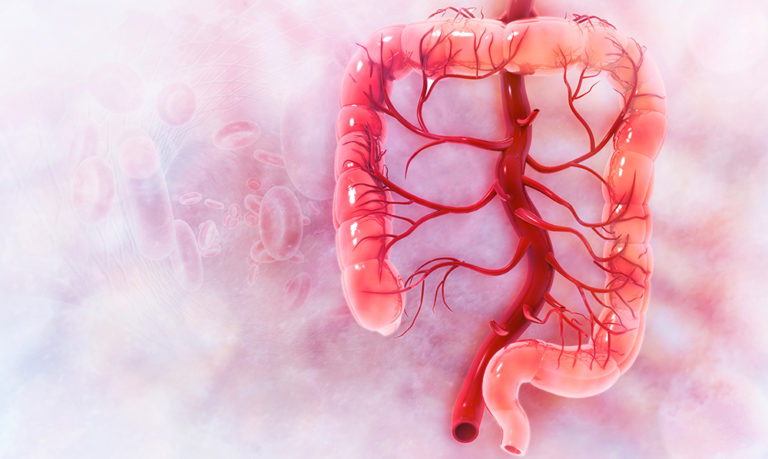Table of Contents: Oncotarget’s Volume 12, Issue 24
Oncotarget
November 23, 2021Read short summaries of the latest oncology-focused research published in this week’s issue of Oncotarget: Volume 12, Issue 24.
—
Cover (Research Paper): CCL20 induces colorectal cancer neoplastic epithelial cell proliferation, migration, and further CCL20 production through autocrine HGF-c-Met and MSP-MSPR signaling pathways
Origin: Massachusetts, United States
Institutions: VA Boston Healthcare System, Harvard Medical School, Beth Israel Deaconess Medical Center, Dana-Farber Cancer Institute, Brigham and Women’s Hospital
Quote: “CCL20-CCR6 interactions promote colorectal cancer through direct effects on neoplastic epithelial cells and through modulating the tumor microenvironment. The mechanism of these effects on neoplastic epithelial cells is poorly understood.”
Research Paper: The potential of PIVKA-II as a treatment response biomarker in hepatocellular carcinoma: a prospective United Kingdom cohort study
Origin: Birmingham, United Kingdom
Institutions: University of Birmingham, University Hospitals Birmingham NHS Foundation Trust
Quote: “Prothrombin induced by vitamin K absence II (PIVKA-II) has recently been validated internationally as a diagnostic biomarker for hepatocellular carcinoma (HCC), as part of the GALAD model. However, its role as a treatment response biomarker has been less well explored.”
Research Paper: Caloric restriction causes a distinct reorganization of the lipidome in quiescent and non-quiescent cells of budding yeast
Origin: Quebec, Canada
Institution: Concordia University
Quote: “After budding yeast cells cultured in a nutrient-rich liquid medium with 0.2% glucose (under caloric restriction conditions) or 2% glucose (under non-caloric restriction conditions), ferment glucose to ethanol and then consume ethanol, they enter the stationary phase.”
Research Paper: Optimization of tumor spheroid model in mesothelioma and lung cancers and anti-cancer drug testing in H2052/484 spheroids
Origin: Geneva, Switzerland
Institution: University Hospitals and University of Geneva
Quote: “The purpose of this study is to establish and evaluate the efficiency of a three-dimensional spheroid model of human thoracic cancer in predicting the efficacy of drugs.”
Research Paper: Circulating low density neutrophils of breast cancer patients are associated with their worse prognosis due to the impairment of T cell responses
Origin: Lisbon, Portugal
Institutions: Universidade Nova de Lisboa, Instituto CUF de Oncologia
Quote: “Neutrophils have gained significant interest in the past years in the field of tumor immune microenvironment (TIME). These immune cells, which were previously only seen as the first responders to a pathogen, were encountered in the TIME, and their major role in cancer biology is becoming increasingly clear [12, 13].”
Research Paper: Regional and temporal heterogeneity of epithelial ovarian cancer tumor biopsies: implications for therapeutic strategies
Origin: Milano, Padova, Monza, Pavia, Italy
Institutions: IRCCS Istituto di Ricerche Farmacologiche “Mario Negri”, University of Padova, University of Milano-Bicocca, University of Pavia, San Gerardo Hospital
Quote: “Stage III/IV epithelial ovarian cancer (EOC) is a systemic disease. The clonal relationship among different tumor lesions at diagnosis (spatial heterogeneity) and how tumor clonal architecture evolves over time (temporal heterogeneity) have not yet been defined. Such knowledge would help to develop new target-based strategies, as biomarkers which can adjudge the success of therapeutic intervention should be independent of spatial and temporal heterogeneity.”
Editorial Paper: Undetected Barrett’s esophagus: how do we improve early detection?
Origin: Maryland, United States
Institution: National Cancer Institute (National Institutes of Health)
Quote: “Barrett’s esophagus (BE), a lesion that results from chronic gastroesophageal reflux disease (GERD), is the only known precursor of esophageal adenocarcinoma (EAC); however, BE lesions are rarely identified prior to EAC diagnosis [1, 2]. In our study investigating the association between usage of common pharmaceuticals and risk of EAC using Surveillance, Epidemiology, and End Results (SEER) Program Data linked to Medicare, we observed that a significant proportion of BE diagnoses occurred within one year of EAC (Figure 1), strongly suggesting prior missed EAC lesions [3].”
Research Perspective: Hepatitis B x antigen (HBx) is an important therapeutic target in the pathogenesis of hepatocellular carcinoma
Origin: Tehran, Iran; Pennsylvania, United States
Institutions: Azad University, Temple University
Quote: “Hepatitis B virus (HBV) is a human pathogen that has infected an estimated two billion people worldwide. Despite the availability of highly efficacious vaccines, universal screening of the blood supply for virus, and potent direct acting anti-viral drugs, there are more than 250 million carriers of HBV who are at risk for the sequential development of hepatitis, fibrosis, cirrhosis and hepatocellular carcinoma (HCC).”
Click here to read Oncotarget’s Volume 12, Issue 24.
YOU MAY ALSO LIKE: More Oncotarget Videos on LabTube
—
Oncotarget is a unique platform designed to house scientific studies in a journal format that is available for anyone to read without a paywall making access more difficult. This means information that has the potential to benefit our societies from the inside out can be shared with friends, neighbors, colleagues, and other researchers, far and wide.
For media inquiries, please contact media@impactjournals.com.


